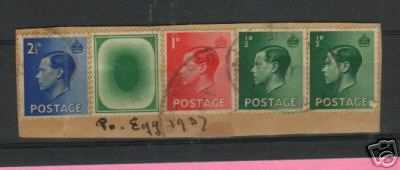Test stamps and "poached eggs"
 Over the weekend, I received my new issue of Scott Stamp Monthly (February 2006). In it, there is an interesting article about test stamps. It talks about the greatly expanded test stamp section in the 2006 Scott Specialized Catalogue of United States Stamps and Covers.
Over the weekend, I received my new issue of Scott Stamp Monthly (February 2006). In it, there is an interesting article about test stamps. It talks about the greatly expanded test stamp section in the 2006 Scott Specialized Catalogue of United States Stamps and Covers.While not actually postage stamps, test stamps are are used for testing printing processes, new technologies, equipment, etc.
According to Wikipedia, the free encyclopedia, in the United Kingdom test stamps for coil dispensing machines are sometimes known as 'poached eggs', because of their design. Most poached eggs remain intact as test stamps throughout their lives. However, others wind up accidentally affixed as legitimate postage stamps.
Poached egg test stamps which get successfully passed in the mail and canceled may be of significant value to British collectors. Shown above is a 'poached egg' which is currently listed on eBay.
Test stamps are also known as 'dummy stamps.' The United States Stamp Society has a Dummy Stamp Study Group, which has recently put out their first newsletter which provides some additional illustrations and information.
To read it, click here.





<< Home